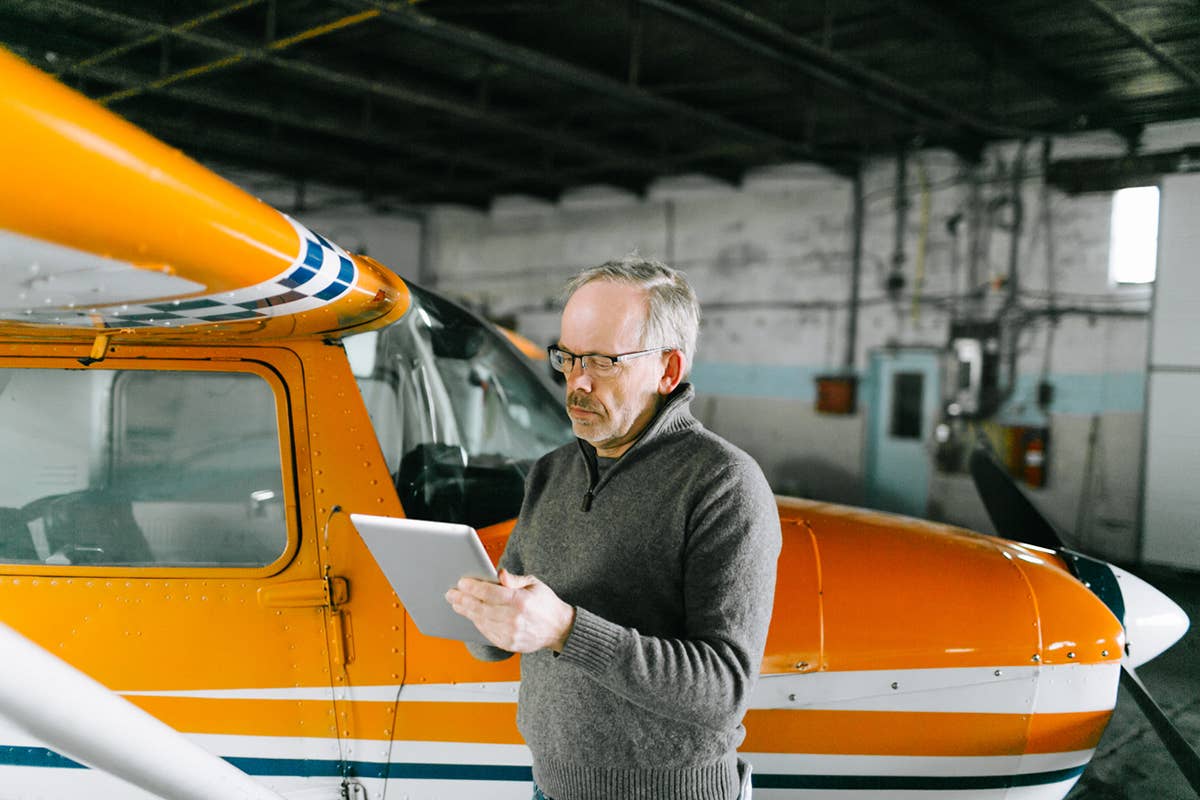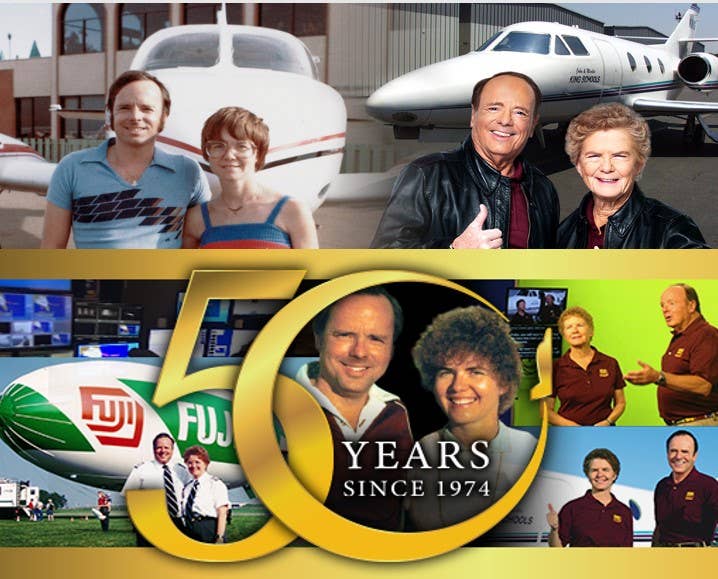Check Ride Applicants Should Beware of This Pitfall
If the applicant isn’t qualified, both the potential pilot and the examiner lose out.

A return-to-instructing CFI–who may have a current CFI rating–also might not be aware of changes in requirements for certificates and ratings, or may not remember the details. That scenario can be detrimental to a check ride applicant. [Photo: iStock]
The check ride had to be scheduled more than a month in advance because of the designated pilot examiner's availability. The IACRA information was filed, the three hours of test prep were flown. The airplane was scheduled. The ride had been rescheduled once because of weather.
Finally the big day came—the candidate handed over the envelope with the $500 cash. While going through the candidate's logbook, the DPE determined he did not have the required experience for the check ride because he had not completed the requirements for the long cross-country flight for the private pilot certificate. FAR 61.109 stipulates the flight must be at least 150 nm total distance, with full-stop landings at three points, and one segment of the flight consisting of a straight-line distance of more than 50 nm between the takeoff and landing locations. The applicant's CFI failed to communicate the part about the full-stop landings at three points—and the applicant didn't have the foresight to look it up.
The result? The check ride was canceled.
Sadly, this scenario, or a variation thereof, happens all too frequently, says David St. George, a 25-year DPE and the executive director of the Society of Aviation and Flight Educators (SAFE). St. George described a DPE meeting he attended at EAA AirVenture this year where the topic of discussion was applicants who show up for check rides without the required experience or endorsements.
"I was surprised," he says, "There were 36 to 40 DPEs around the table talking about this, and it appeared about one-fifth of the check rides scheduled across the nation were just being thrown away because the applicant did not have the required experience or was missing an endorsement. It wastes the DPE's time—someone else could have had a flight test."
In a post on the SAFE blog, St. George notes, "A DPE cannot legally accept the IACRA 8710 and begin a certification activity, unless all the applicant’s experience and endorsements are correct and meet the regulatory standards. We are wasting 20 percent of check ride opportunities! We could boost availability dramatically by just getting the qualification part correct."
St. George created the SAFE Toolkit app to address this. The app essentially puts the requirements for all the certificates and ratings and the wording of the required endorsements on a smartphone and therefore in the CFI's pocket.
The Role of the CFI
It is not a secret that learners tend to trust their instructor's word that they meet the requirements for the check ride and they are ready. If the applicant fails, no matter what the circumstances, they often blame their instructors.
"It gets litigated in the court of Facebook," says St. George. He suggests that applicants be taught to take a more active role in their preparation, as in knowing how to look up the experience requirements in the FAR/AIM and how to cross reference them with what is in their logbooks.
Jason Blair, Michigan-based DPE and FLYING contributor, says he's seen instructors who run the gamut from the conscientious CFI who over-prepares the applicant to the time builder for whom instruction is a means to build hours.
"They may only instruct for a few months, as opposed to instructing for a few years to really get good at it," Blair says. "They are just looking to push through, get their hours and head off to the airlines. They might finish two or three applicants in the few months they are CFIs. They don't spend the time to develop the tools they need to make sure their applicants meet the requirements."
On the other side of the spectrum are the return-to-instructing CFIs, who, although they have a current CFI rating, are not aware of changes in requirements for certificates and ratings, or they don't remember the details. Their lack of awareness or attention to detail can bite the applicant.
Blair related a story about a CFI who was operating under the assumption that the learner's medical certificate was his student pilot certificate—as it was decades ago. Today, the learners are required to have a plastic student pilot certificate in addition to the paper medical certificate. Because of the instructor's mistake, the learner's 26 hours of solo time did not count, because he did not hold a student pilot certificate as required by the FARs.
Check and Cross-Check
Before the dawn of the digital age, the instructor and applicant would go through the FAR/AIM noting the minimum experience required for the certificate or rating and comparing that with the experience recorded in the applicant's logbook. Ideally, this was done a few weeks before the check ride so if there was a missing requirement it could be addressed. Then the CFI would reference advisory circular (AC) 61-65, which lists all the endorsements necessary, and double check that they are in the learner's logbook, properly worded, and accompanied by the CFI's name and certificate number (legible).
It can be a challenge when the learner is using a paper logbook with pre-printed endorsements, says St. George, because the logbook may be years, perhaps even decades old.
"The pre-printed endorsements are almost always wrong, so don't trust them," says St. George. "Use the language in the AC 61-65H. If there is any doubt, take a scan of the signed endorsement and send it to the DPE ahead of time and ask if it will work. If not, fix it using a collaboration between the DPE and the CFI. We're all working in the business of making safe pilots and we can fix this together."
If an endorsement is missing and the CFI is available, oftentimes the issue can be fixed on the spot, says Karen Kalishek, the chairman of NAFI and a DPE in Nevada and California. She has been a DPE since 2020—"Just in time for COVID," she jokes—and has given approximately 300 exams to date.
If the DPE determines the applicant is not qualified for the check ride, the process terminates. It will be a minimum of 24 hours before the process can begin again because even if the applicant was able to get that missing experience in a short time—like taking a lap in the pattern—the DPEs are required to enter the candidate’s application into the Designee Management System, a web-based tool designed to standardize the management of designees before permission for the check ride can be obtained.
"The DPE can often spend three to four hours getting the paperwork ready for the check ride," says St George, adding that without the utilization of the DMS, the DPE cannot get permission to proceed with the check ride.
DPEs can help themselves by reaching out to the applicants early in the process. Kalishek notes that she sends the applicants three different emails to help them prepare for the big day, being careful to CC the instructor.
"The first one is sort of ‘howdy,’ just to say hello and tell them about the fees," she says."The second one is more preparation for the check ride, to make sure they have all the experience listed and it is verified. The third email is the cross-country scenario the applicant will be expected to plan and fly."
St. George, Blair and Kalishek all stated that the cross-country scenarios are tailored to each individual pilot taking the exam. Often they are drawn from “areas shown to be deficient” from the applicant’s knowledge test, as the examiners are required to verify that learning has taken place and the applicant now has the required level of knowledge to be a safe and competent pilot and to hold the certificate and rating they seek.
"About a third of the applicants contact me before the check ride with questions," said Kalishek, adding that it's better that they head into the check ride knowing what to expect, because any kind of anomaly, such as the paperwork not being in order, can escalate the applicant's stress level.
"It comes down to being pilot in command," says Kalishek. "This is your exam. As PIC, this is your exam, you need to verify all this information. I send them a checklist of the requirements that they can go through themselves so they do not have to rely on their CFI."
She adds, “An exam is a team effort….The applicant, the CFI, and the examiner are a team and everyone wants success and safety. There are layers to verify that we are there."

Subscribe to Our Newsletter
Get the latest FLYING stories delivered directly to your inbox






